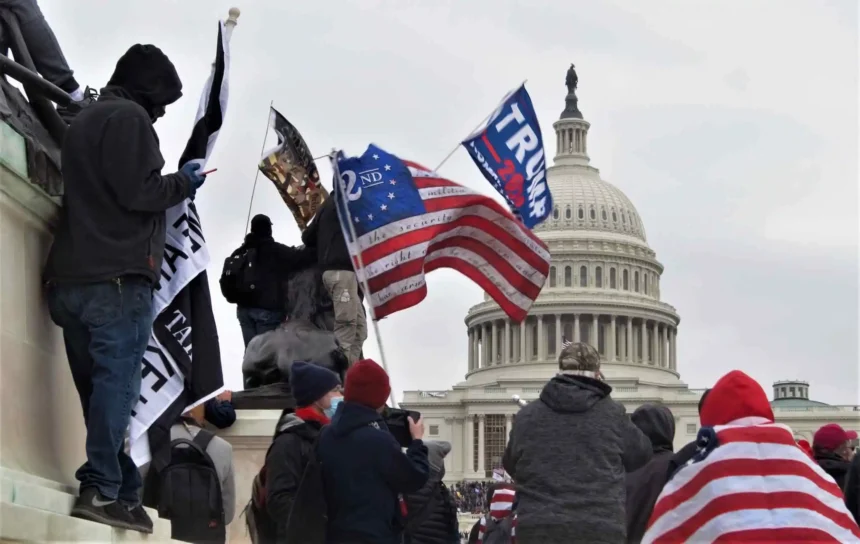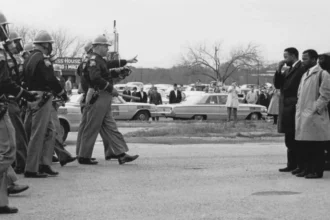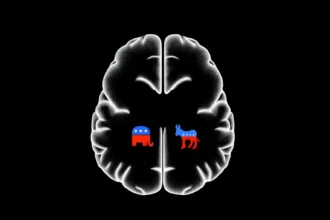The 2024 Presidential Election and American Polarization
The 2024 presidential election in the United States featuring Kamala Harris and Donald Trump exhibits many of the features of America’s highly polarized political society. From Democrats name-calling Republicans as “weird,” to Donald Trump and his running mate, J.D. Vance, continually making highly divisive statements about a range of groups in America (immigrants, cat-ladies, etc.,) the rhetoric of this election follows those of the recent past in heightening partisan tensions rather than leading towards any kind of national unity.
- The 2024 Presidential Election and American Polarization
- The Role of Cognitive Closure in Partisan Division
- The Evolution of Partisan Identities
- Understanding Cognitive Closure and Its Impact on Polarization
- Cognitive Closure and Affective Polarization in U.S. Politics
- Partisan Identities and Cognitive Closure Across Political Parties
- The 2016 Election: A Case Study in Polarization
- Implications for Understanding U.S. Polarization
Of course, politics in America has not always been this divisive. In fact, scholars of comparative politics have often pointed to the relatively high degree of consensus between America’s political parties.
To be a Democrat or a Republican means to have core characteristics of who one is and what one believes defined and spelled out for one by the party organization.
My recent book, The Closed Partisan Mind: A New Psychology of Partisan Polarization, offers an explanation for the current rates of intense partisan division in contemporary U.S. society and a new theory for why political tensions have become increasingly exacerbated in recent decades.
The Role of Cognitive Closure in Partisan Division
My central argument is that today, America’s two political parties, the Democrats and the Republicans, provide their supporters with a psychological reward or benefit that the parties did not provide for most of the twentieth century: psychological and cognitive “closure.”
American political parties today provide clear messages about what it means to be a Democrat or a Republican.
By cognitive closure, I refer to the ability to “seize” and “freeze” on some belief or aspect of the world.
Religious groups and belief systems, for instance, are renowned for their ability to offer cognitive closure about many of life’s most mysterious questions.
The political parties in America today are similar: they give supporters a clear sense about a range of fundamental questions. Political parties today prescribe beliefs and secondary identities that make it easy for supporters to “seize” and “freeze” on questions about what they believe and who they are.
Democrats, for instance, are pro-choice and anti-gun, care about the environment and inequality, drive certain automobiles (e.g., Prius) and shop at certain grocery chains (e.g., Trader Joe’s). Republicans, by comparison, are pro-life and pro-gun, relatively unconcerned about environmental issues and the wealth gap, and also drive certain automobiles (e.g., pickup trucks) and shop at certain grocery stores (e.g., Sam’s club).
The Evolution of Partisan Identities
These characteristics of partisans are not only issue preferences and consumer choices but fundamental aspects of Democratic and Republican identity. To be a Democrat or a Republican means to have core characteristics of who one is and what one believes defined and spelled out for one by the party organization.
The Democratic and Republican parties today prescribe these preferences and lifestyles in a way they did not even thirty years ago.
Joe Biden, for instance, who in 2020 ran on a solidly pro-choice abortion platform (as part of the Democratic consensus), was in 1982 in favor of a constitutional amendment that would have allowed states to overturn the now-defunct Supreme Court precedent of Roe v. Wade.
American political parties today provide clear messages about what it means to be a Democrat or a Republican; they provide their supporters with a clear sense of who they are, what they should believe, and who (and what) they should oppose. Today’s Democratic and Republicans parties, in short, give their supporters the ability to achieve a sense of cognitive closure.
Understanding Cognitive Closure and Its Impact on Polarization
As such, my book argues that we should be able to explain differences between people in the extent to which they exhibit polarized political attitudes as a function of their underlying psychological need for cognitive closure. Much of the book involves empirically evaluating this argument. I collect numerous surveys which measures the psychological need for cognitive closure as well as measures of “affective polarization,” and assess how closely correlated these two variables are with each other.
The most affectively polarized people in America tend to be those who display the strongest psychological desire for cognitive closure.
The need for cognitive closure is a psychological variable that reflects individual differences in “closed-mindedness,” aversion to uncertainty, and a desire to “seize” and “freeze” on thoughts and identities. The questions that I use to measure the extent to which a person scores high or low in their need for cognitive closure ask respondents to agree or disagree with a variety of statements.
Some of the statements include the following:
- (1) “I don’t like situations that are uncertain,”
- (2) “I feel irritated when one person disagrees with what everyone else in a group believes,”
- (3) “When I am confronted with a problem, I’m dying to reach a solution very quickly,”
- (4) “I find that establishing a consistent routine enables me to enjoy life more,” and
- (5) “I prefer things that I am used to over things I am unfamiliar with.”
Cognitive Closure and Affective Polarization in U.S. Politics
Affective polarization reflects a particular definition of polarization in America among the mass electorate. The political scientist Shanto Iyengar and his colleagues first defined this concept of polarization as one of likes and dislikes towards the two political parties. Most Americans are relatively ignorant about politics and are incapable of complex ideological thinking.
Yet despite these limitations, pretty much everyone in America who votes has a clear alignment towards either the Democratic or the Republican Party. Given these patterns, Iyengar and his colleagues argued that if Americans are going to polarize towards the political extremes, this is likely to happen with respect to their feelings about the parties rather than their thoughts about issues or ideological agendas.
Democrats and Republicans have more in common psychologically than typically presumed.
Indeed, extensive empirical analysis of survey data has indicated that Americans in fact do exhibit significantly more polarization of their partisan feelings than of their issue preferences. Hence, the way to measure polarization in America is to ask respondents about the strength of their partisan identities and the extent of their hostility towards political opponents.
In repeated tests, I find consistent evidence that those individuals who score higher in the need for cognitive closure exhibit significantly more polarization of their partisan feelings. In other words, the most affectively polarized people in America tend to be those who display the strongest psychological desire for cognitive closure. Interestingly, I also found that this relationship is concentrated among people who are highly engaged in politics—those who are knowledgeable about and who do participate in public affairs. It is these folks, who care about politics, for whom political parties have become a means of achieving cognitive closure.
Partisan Identities and Cognitive Closure Across Political Parties
One important dimension to my book is to explore the relationship between the need for closure and partisan polarization among both Republicans and Democrats. There is a longstanding tradition in America to view the parties as different with respect to how “open” or “closed” they are.
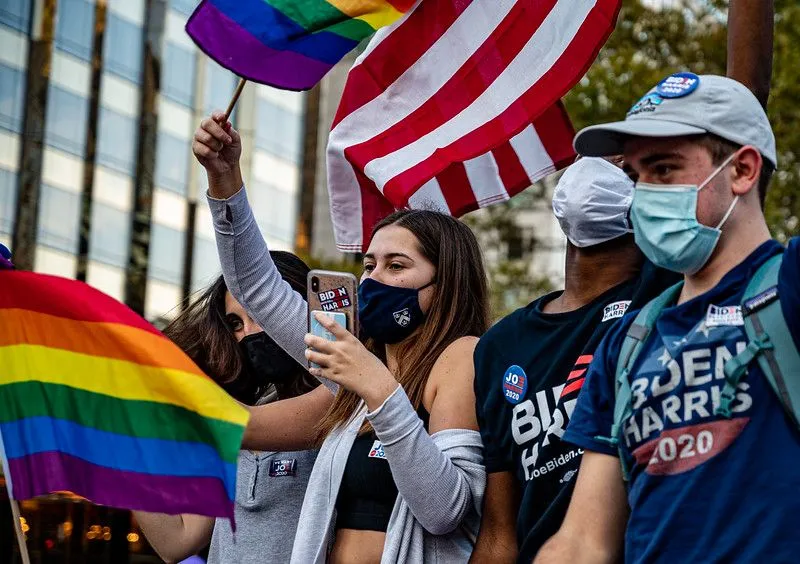
This view is also deeply reflected in contemporary scholarship in political psychology, where the conventional wisdom has long been that the Republicans are significantly more likely to score high in the need for cognitive closure test than Democrats.
While I find some support for this expectation, I also overturn the conventional wisdom by showing that there are not only many Democrats with strong psychological needs for closure, but that Democrats with strong needs for closure tend be stronger Democratic partisans than those with weaker needs for closure. In other words, the most polarized Americans, regardless of partisan affiliation, tends to be those with strong psychological needs for closure. Among polarized Americans, political conflict does not reflect this structure of open versus closed, but rather a dynamic of closed versus closed.
Both political parties have changed in ways that are most appealing to folks who are more closed-minded, averse to uncertainty, and who desire cognitive closure.
Subsequent chapters of the book expand these investigations. For instance, in chapter 3 I examine how changes in the two political parties at the elite level have contributed to changing the nature of mass partisanship, such that people today see the political parties as effective providers of psychological certainty. Indeed, for much of the twentieth century Americans viewed the two political parties similarly to the students of comparative politics; people even had difficulty differentiating the two parties, seeing them as Tweedledee and Tweedledum.
That has changed, and it has changed largely because elites within the two parties have becoming increasingly distinct ideologically. Democratic representatives are now overwhelmingly liberal (supporting expanding social welfare programs and protecting human freedoms and civil liberties) while Republicans are increasingly conservative (opposed to social welfare protections and opposed to expanding civil liberties protections to marginalized groups). The American public sees these changes, and it is because of them that partisan identification has become a viable means of achieving some sense of cognitive closure.
The 2016 Election: A Case Study in Polarization
Chapter 4 tracks the relationship between the psychological need for closure and affective polarization over the course of the 2016 presidential election. As a highly divisive contest for the nation’s highest office, the 2016 election provided an opportunity to see how political attitudes change over the course of a political campaign and to examine whether and/or how the need for cognitive closure contributes to those changes.
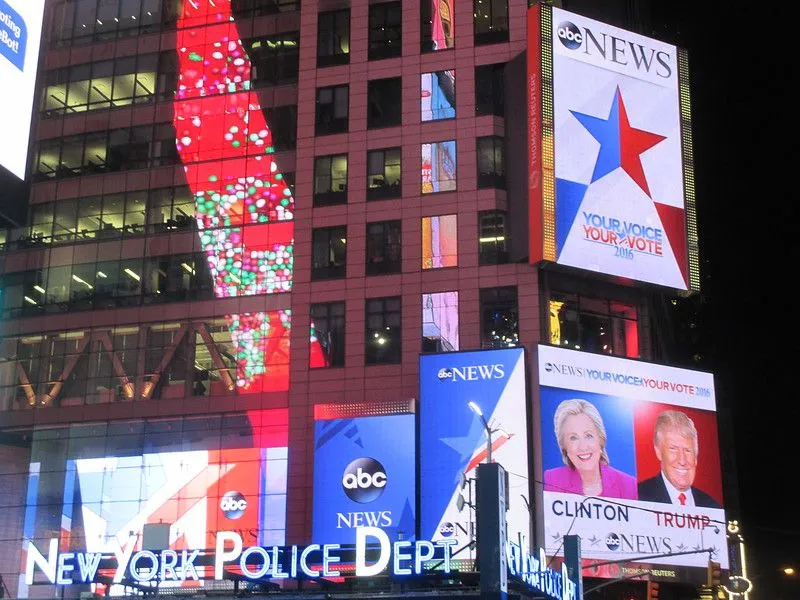
Furthermore, if ever there was a case that would seem to typify the conventional wisdom about America’s parties (Republicans as the closed and Democrats as the open), it would seem to be the 2016 election. Thus, one might well hypothesize that over the course of that campaign individuals who are psychologically closed would become more Republican, while those who are more open would gravitate towards the Democrats.
My argument leads to an alternative hypothesis: that the psychologically closed would, over the course of the campaign, become increasingly partisan (regardless of the party the identify with). I find considerably more support for this latter expectation: over the course of the 2016 presidential election, individuals with strong psychological needs for closure became more politically polarized than individuals with weak needs for cognitive closure.
Implications for Understanding U.S. Polarization
My book therefore establishes two important points. First, if you want to understand why America is polarized and who in America has the strongest and most extreme partisan feelings, you need to understand the psychology of cognitive closure.
Parties, in becoming more ideologically distinct and prescribing distinct lifestyles to their supporters, have changed in their capacity to be effective providers of psychological certainty. As a result, individuals with strong and relatively innate desires for psychological closure have become the most polarized and committed partisans.
Therefore, and second, we should not see American polarization through the lens of viewing the two parties as fundamentally different (i.e., open versus closed, or the idea that Republicans are from Mars and Democrats from Venus). Instead, what has happened is that both political parties have changed in ways that are most appealing to folks who are more closed-minded, averse to uncertainty, and who desire cognitive closure.
Democrats and Republicans have more in common psychologically than typically presumed, and recognizing this commonality, I suggest, can perhaps go some way towards reducing the hostility and tension that predominates in American politics.


